Amazon Elastic Container Service (ECS)
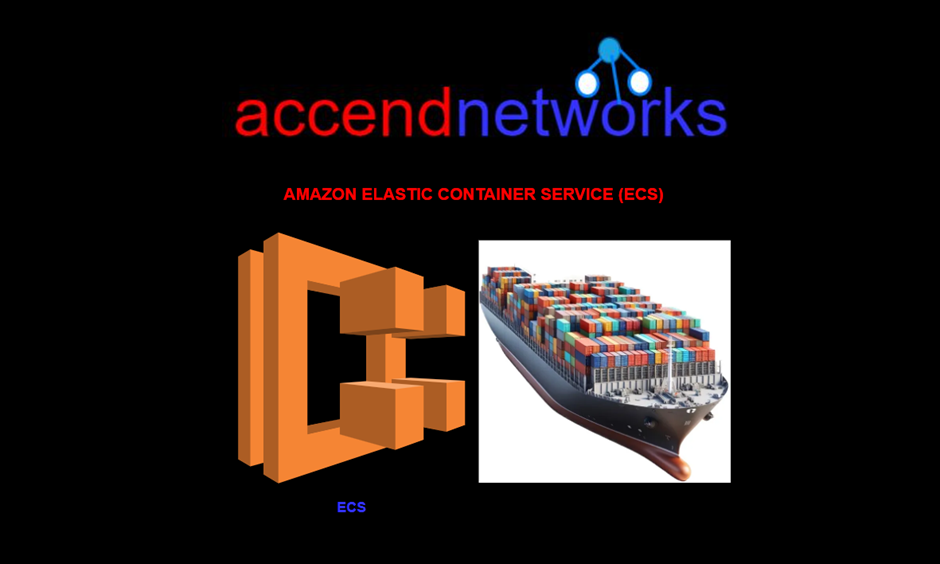
Introduction:
In the ever-evolving landscape of cloud computing, managing containerized applications efficiently has become a paramount concern for businesses seeking agility, scalability, and ease of deployment. Amazon Elastic Container Service (Amazon ECS) emerges as a powerful solution within the Amazon Web Services (AWS) ecosystem, providing a robust platform for orchestrating and managing Docker containers at scale.
What is a Container?
In the world of software, a container can be thought of as a compact, self-sufficient unit that holds everything a piece of software needs to run. Furthermore, just like a shipping container in the real world, which contains all the goods needed for transportation, a software container encapsulates the necessary components for a program to function. Additionally, these components include the code itself and any libraries, dependencies, and environment settings it requires.
Overview of Amazon ECS
Amazon ECS is a fully managed container orchestration service that simplifies the deployment, management, and scaling of containerized applications using Docker containers. Moreover, it eliminates the need for manual intervention in provisioning and scaling infrastructure, allowing developers to focus on writing code and building applications rather than managing the underlying infrastructure. This automated approach streamlines the development process, making it more efficient and conducive to rapid application deployment.
ECS architecture

ECS Terminology:
Task Definition

This is a blueprint that describes how a Docker container should launch. Additionally, if you are already familiar with AWS, it is like a LaunchTemplate; however, it is tailored for a Docker container instead of an instance. Notably, it contains settings such as exposed port, Docker image, CPU shares, memory requirements, command to run, and environmental variables.
Task
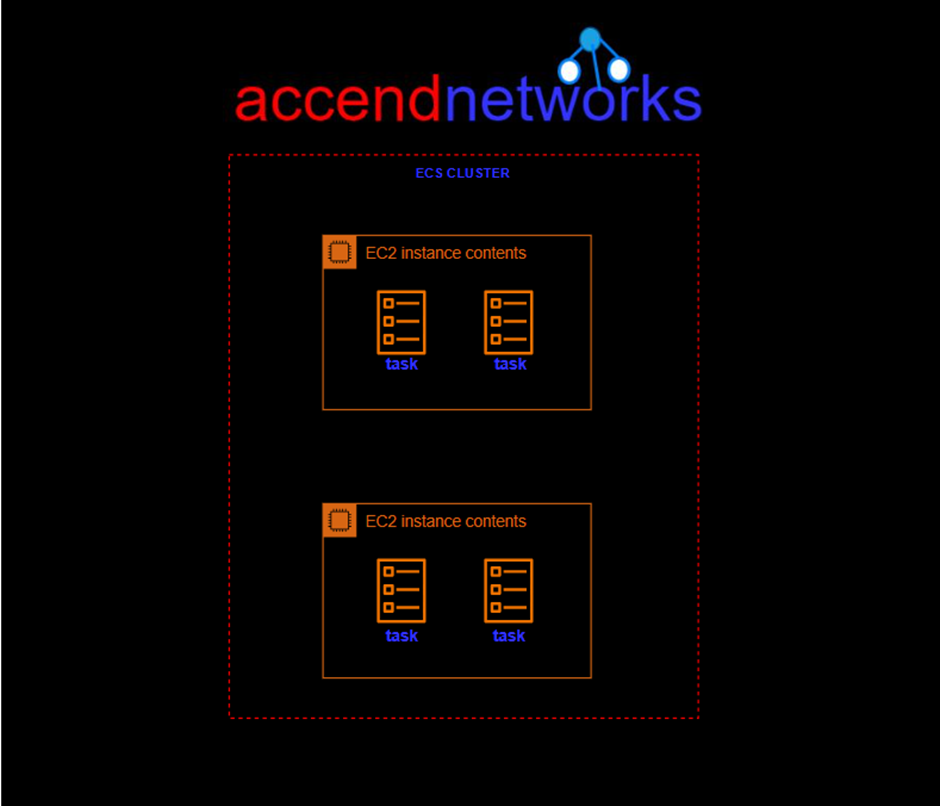
This is a running container with the settings defined in the Task Definition. Consequently, it can be thought of as an “instance” of a Task Definition.
Service — Defines long-running tasks of the same Task Definition. This can be one or multiple running containers all using the same Task Definition.
Service — Defines long-running tasks of the same Task Definition. This can be one or multiple running containers all using the same Task Definition.
Cluster
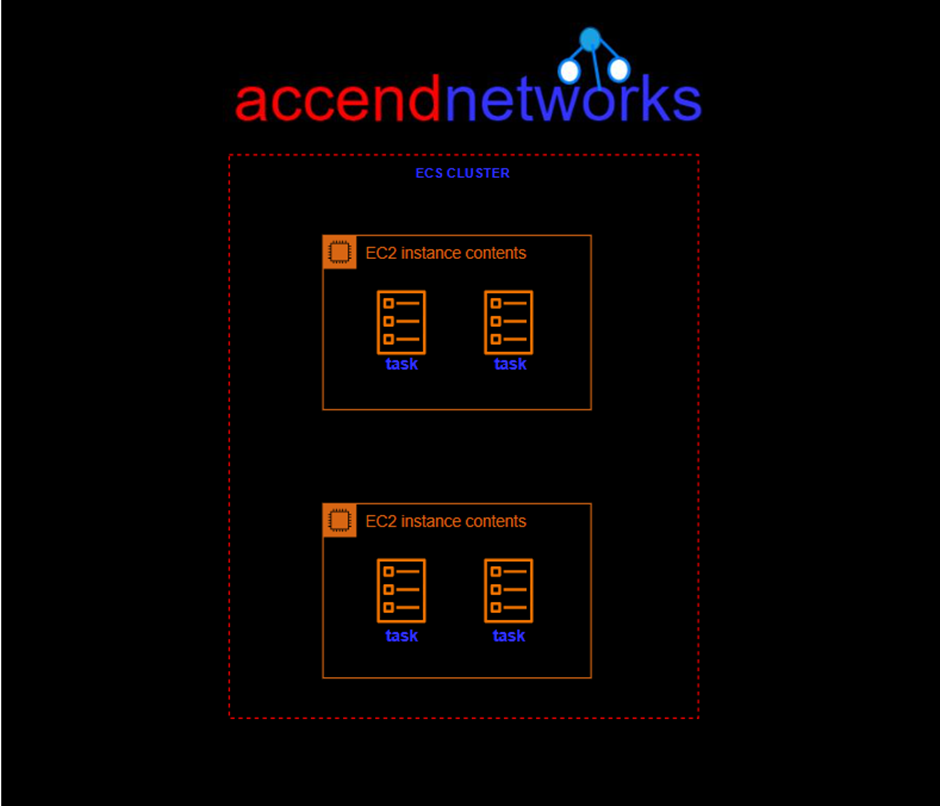
A logical grouping of EC2 instances. When an instance launches the ECS-agent software on the server registers the instance to an ECS Cluster.
Container Instance — This is just an EC2 instance that is part of an ECS Cluster and has docker and the-agent running on it.
Amazon ECS is a service we can use for running docker containers on AWS, either in a serverless manner or with the underlying infrastructure within our control.
An elastic container registry is where we can store the images for our containers.
Container Instance — This is just an EC2 instance that is part of an ECS Cluster and has docker and the-agent running on it.
Amazon ECS is a service we can use for running docker containers on AWS, either in a serverless manner or with the underlying infrastructure within our control.
An elastic container registry is where we can store the images for our containers.
Images
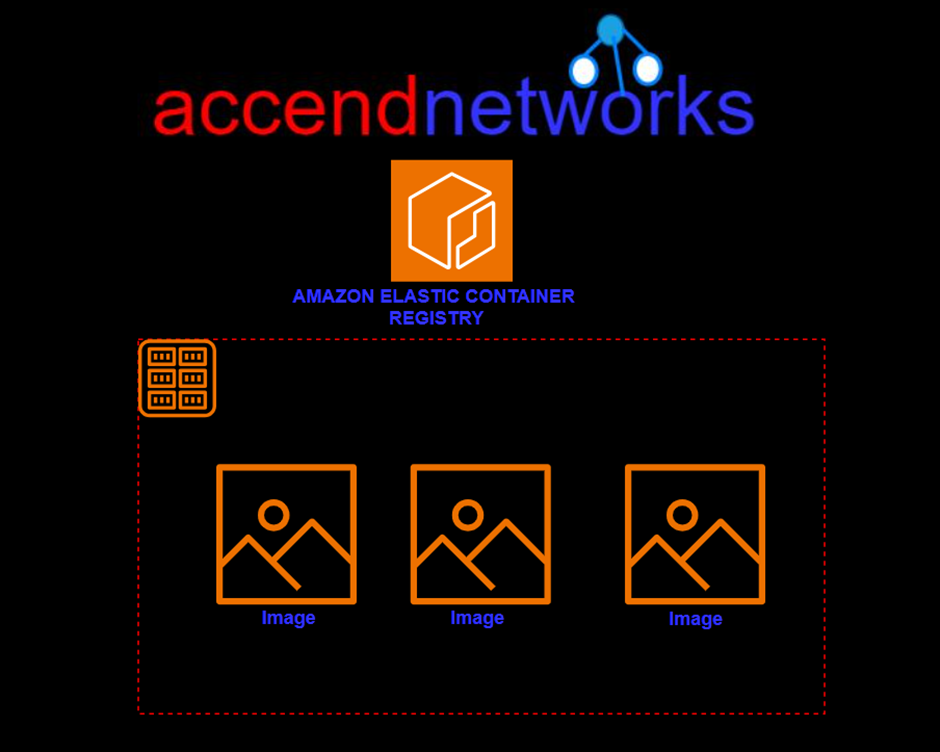
A container image is essentially a lightweight, standalone, and executable software package that includes everything needed to run a piece of software, including the code, runtime, libraries, and system tools. Docker, the popular containerization platform, defines container images with a layered file system and metadata.
Amazon ECS (Elastic Container Service) provides flexibility in how you launch and manage containers, offering two primary launch types:
Amazon ECS (Elastic Container Service) provides flexibility in how you launch and manage containers, offering two primary launch types:
1. EC2 (Elastic Compute Cloud)
2. Fargate.
Each launch type caters to different use cases, allowing users to choose the one that aligns with their specific requirements.
Amazon ECS EC2 Launch Type:
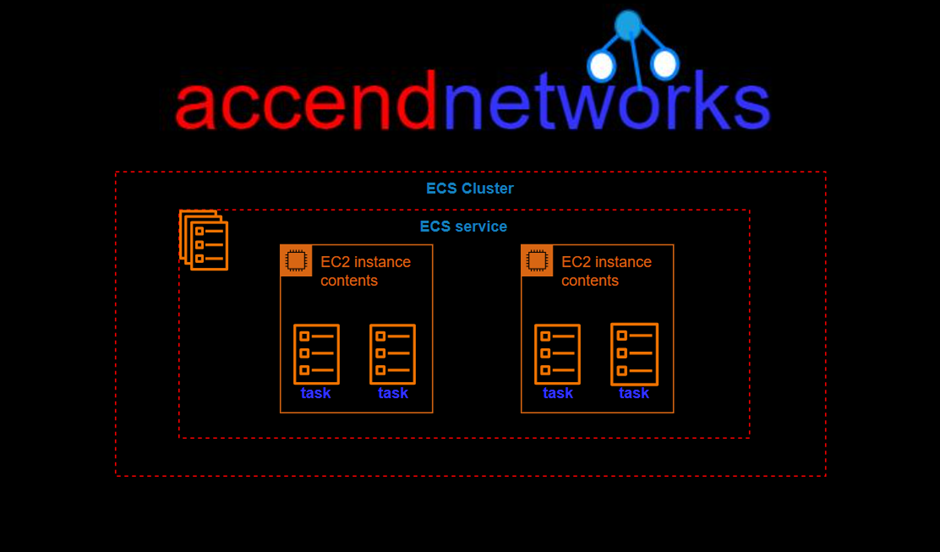
The EC2 launch type enables you to run containers on a cluster of Amazon EC2 instances that you manage. This launch type is suitable for users who want more control over the underlying infrastructure and require customization of EC2 instances.
Key Features and Considerations:
Infrastructure Control:
Users have direct control over the EC2 instances, allowing customization of the instances to meet specific requirements, such as installing specific software.
Legacy Applications:
Well-suited for migrating legacy applications that require access to features not available in Fargate or applications that need specific networking configurations.
Cost Management:
Provides more granular control over EC2 instance types, allowing users to optimize costs based on their specific workload requirements.
Custom Networking:
Users can leverage Amazon VPC (Virtual Private Cloud) to define custom networking configurations, including subnet placement and security group settings.
Custom Networking:
Users can leverage Amazon VPC (Virtual Private Cloud) to define custom networking configurations, including subnet placement and security group settings.
Amazon ECS Fargate Launch Type:
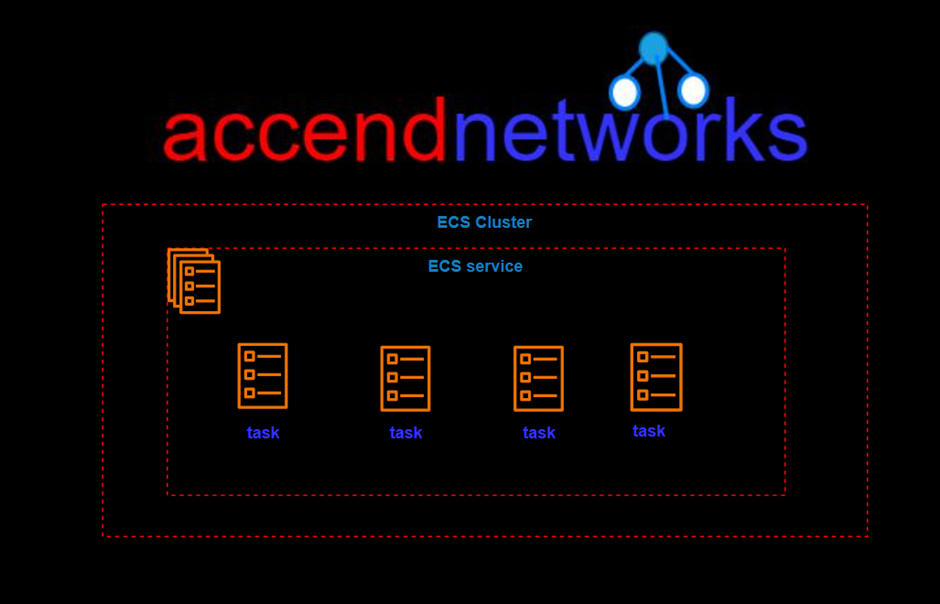
Fargate is a serverless launch type that allows you to run containers without managing the underlying infrastructure. Furthermore, with Fargate, AWS takes care of provisioning and scaling the infrastructure, allowing users to focus solely on defining and running their containerized applications.
Key Features and Considerations:
Serverless Deployment:
Fargate abstracts away the underlying infrastructure, providing a serverless experience for running containers.
Simplified Operations:
Reduces operational overhead as users don’t need to worry about patching, updating, or scaling EC2 instances. Fargate takes care of these tasks automatically.
Resource Isolation:
Containers run in an isolated environment, ensuring resource allocation and utilization are managed effectively. This isolation provides a high level of security and performance.
Cost Efficiency:
Fargate charges based on the vCPU and memory used by your containers, allowing for precise cost management without the need to manage and pay for underlying EC2 instances.
Networking Simplification:
Fargate simplifies networking by abstracting away the complexities of Amazon VPC. Users define task-level networking, and Fargate handles the rest.
